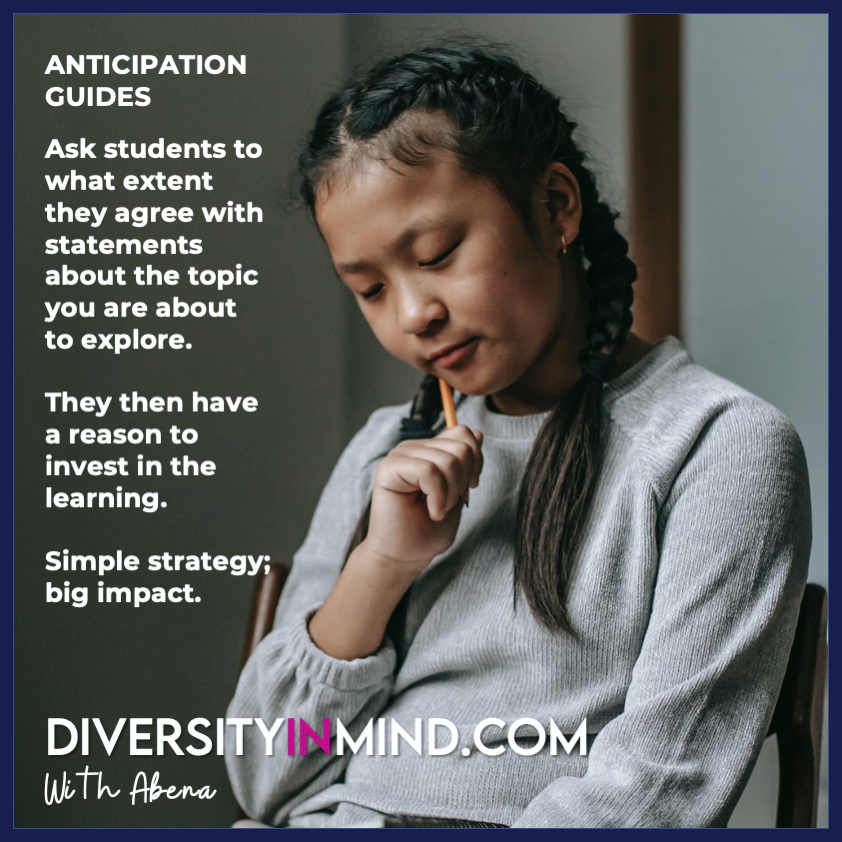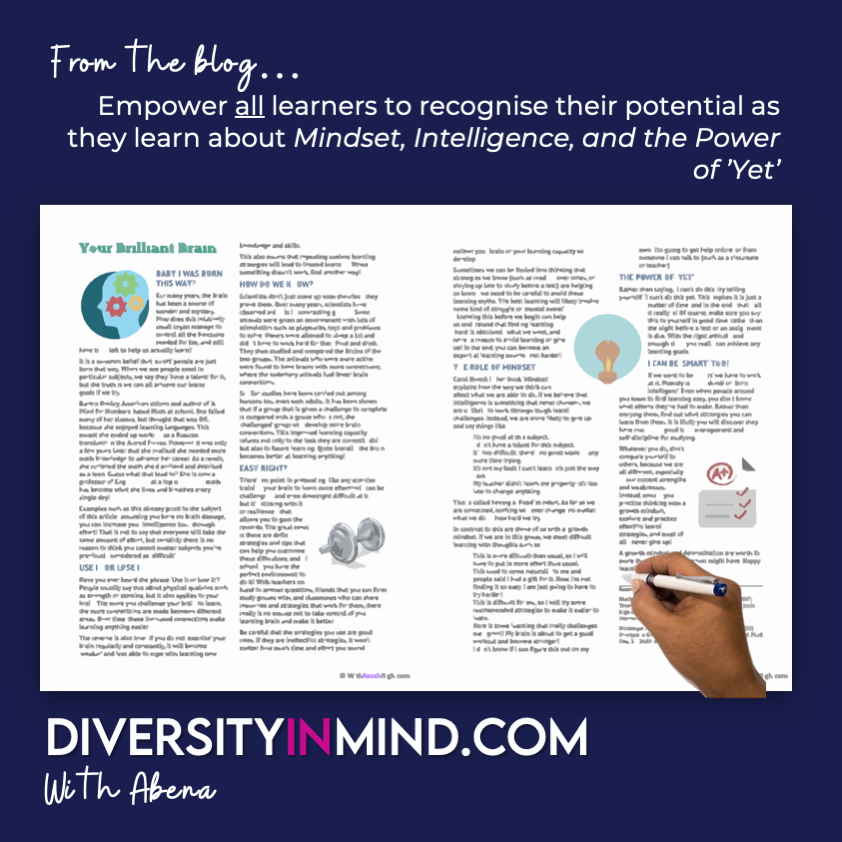In the last post on mindset, we explore the ‘what’ and ‘why’ of a growth mindset in the culturally sustaining classroom. This time, I share how I explore the topic of a growth mindset with my middle and high school students.
Getting Ready to Learn About Growth Mindset in the Culturally-Sustaining Classroom
As we know, before introducing new learning it is worth ‘warming up the brain’ so students are ready to connect old learning with new learning. Introducing a topic also gets our brain cells into the mode for experiencing related information. There are lots of ways to do this, but in this particular lesson I use an anticipation guide. The one-page handout asks students whether they agree or disagree with a number of statements around intelligence and learning.

Mindset, Intelligence, and the Power of Yet
Once students’ curiosity has been stoked, I read aloud an article on how the brain develops (before students get their own copy). As students listen they review their responses in the anticipation guide and can compare responses together before we review as a class.
There are lots of relevant articles to be found around the web, but I developed my own at 2 levels to ensure it was accessible to all and included the key points I wanted to hit. Both versions include:
- Information on intelligence as something to be developed, rather than determined at birth
- The role of mindset in learning
- The power of ‘yet’
Following the listening activity, students dig deeper into their own copy of the text with a double-sided ‘While You Read’ handout. The variety of tasks on the handout means they practice the key reading skills of:
- citing evidence
- finding the main idea
- recognising cause & effect
- identifying the importance of a section as part of a whole
- synthesis
These skills are useful for any student’s reading development, regardless of where they are studying. The questions are intentionally thought-provoking, so I guide the students to work in pairs with 3 steps:
- Discuss (with no pens in hands).
- Agree (with no pens in hands).
- Record responses.
I also provide discussion cards as a follow up to the reading, so students can develop their ideas.

Making the Learning Count
It’s all very well students knowing about a growth mindset, but it’s all for nought if they don’t apply it to their learning. In the final stage of this lesson, students are asked to reflect on how this learning might impact their attitude and actions. We might use a protocol based on the Harvard Visible Thinking Routine (but adapted): ‘I used to think…but now I think…so…’
Whatever way we review our thinking, students then set specific goals based on their learning. This ensures that the lesson hasn’t just been about understanding the ‘why’ but also that it feeds into their attitudes for the rest of the year.
Steal Ideas Or Save Time
Here, I’ve shared the details of a lesson I use year-on-year with great results for developing a growth mindset in the culturally-sustaining classroom. Not only does it remind or introduce students to the control they have in their learning; it also gives us a shared vocabulary to continue learning conversations throughout the year.
You can create your own lesson around these activities, or you can save time and support my mission to encourage culturally-sustaining classrooms. The ready-to-go lesson pack is available in the Downloads section here or from TeachersPayTeachers.
Whatever you do, enjoy the journey.
We’ve got this!


